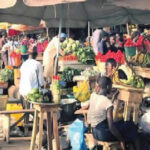One of the aspirations for the development of Abuja is having a city to serve as a symbol of Nigeria’s aspiration for unity and greatness that shall be comfortable, healthful, and possess adequate natural resources to provide a promising base for urban development. As the nation’s capital city, improving the visual quality is considered a national goal. City greening through tree planting with both local and assorted species is a very important objective for achieving that goal.
It is worth noting, that apart from the rural communities of former Wuse, Garki, Kuje, Bwari, and all the original settlements occupying the land, prior to the commencement of the Federal Capital City development, the vegetation is Guinea Savanna with typical rainforest plant species, constituting tall mahogany and iroko trees.
To develop a city from such wilderness entails deforestation, the removal and replacement of the abundant biodiversity that originally existed on the land for various forms of urban development.
In the global arena, the Amazon Forest in South America is not only the largest rainforest in the world, but also constitutes more than 12 per cent of the global land area. More than one-third of all the species in the world live in the Amazon Forest. The Amazon Forest plays a major role in the stabilisation of the global climate. The loss of trees and other vegetation due to deforestation in the Amazon and other places, gave birth to the prevailing climate change, with desertification, soil erosion, fewer crops, flooding, increased greenhouse gases in the atmosphere, and a host of problems for human survival.
On the other hand, the cityscape without ornamental plants is akin to tea without sugar. Not only for decoration but for maintaining ecological balance. Maintaining balance in the ecosystem is very key to healthy environment. Ecological balance is a term describing how ecosystems are organised in a state of stability where species coexist with other species and with their environment. In order to mitigate the challenges of destruction of the erstwhile biodiversity at the same time enhance the visual quality, Abuja was designed as a Garden City with 33 per cent of the total land budget earmarked for greening. Unfortunately, the task of defending the green component is proving to be very tough.
The threat posed by the population pressure in the city leads to stiff competition between rival land uses. Specifically, the residential and commercial land uses pose great threats and challenges to areas reserved for greening. For those areas already developed, changes in their uses earlier earmarked as green in the master plan to residential and commercial uses are now the order of the day. While forest fringes adjoining major roads are getting continuously erased in favour of roads expansion, without efforts to replace the plants being removed.
According to Sherer 2003, “In a research conducted by the US Forest Service, it was calculated that over a 50-year lifetime, one tree generates $31, 250 worth of oxygen, provides $62,000 worth of air pollution control, recycles $37, 500 worth of water, and controls $31, 250 worth of soil erosion”.
In 2009 when the Airport and Outer Northern Express (ONEX) Roads expansion project commenced, it ushered in brisk business by timber dealers who saw it as an advantage for chopping free trees among the abundant vegetation flanking the roads that are to give way for their expansion, and cutting same to various sizes of wood for sale.
The glaring adverse consequence was the loss of the abundant vegetation flaking these roads and beyond which has the tendency of adversely contributing to the imbalance in the ecosystem leading to an increase in global warming, which today is known the world over as the worst catastrophe threatening the existence of life on our planet. As a phenomenon which process accumulated unnoticed over decades, and which has regional and continental dimensions, mitigation measures for the amelioration of the catastrophic global warming consequent upon development activities in our capital city and its environs must be prioritised.
The latest challenge is the use of parks and gardens as environments and hiding places for criminal activities by scoundrels. In such circumstances, the advantages to be derived from the city greening earlier highlighted is becoming more and more remote. There is thus the necessity to make deliberate attempt to mitigate the adverse effects of the events.
The Parks and Recreation Department, was created in 2004. It is one of the technical departments under the Abuja Metropolitan Management Council (AMMC). Consequently, the FCT Park Regulations was officially gazetted in November 2005. All lands earmarked as green areas were plotted under the custody of the Parks and Recreation, in order to ensure their development in line with the provision of the Abuja Master plan.
Subsequently in 2019, the FCT Park Policy was gazette to among others, pursue the implementation of the Green Concept, a practice evolving in cities around the world and also ensure the protection, preservation and classification of trees and other natural features.

 Join Daily Trust WhatsApp Community For Quick Access To News and Happenings Around You.
Join Daily Trust WhatsApp Community For Quick Access To News and Happenings Around You.